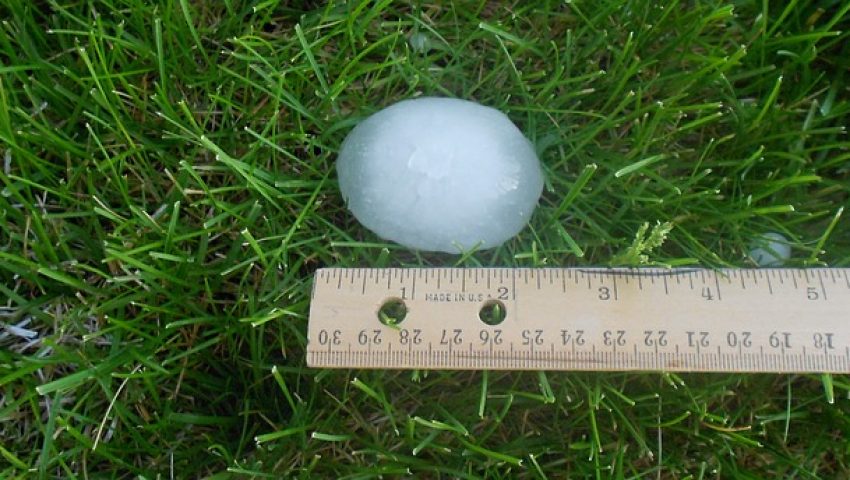First, the Myths of Denver Hail Damage
Hail is the one of the biggest threats to roofs in the Denver metro area. Ask any Denver roofer and you will hear all about the Denver hail damage to roofs. At Peak to Peak Roofing and Exteriors, we are no stranger to Denver hail damaged roofs. We know how to spot them and we know how to fix them. But there is a lot of hail damage to roof myths floating around out there. Here are four of the most common.
- None of the Shingles are Missing
Because you don’t see any missing shingles doesn’t mean you don’t have hail damage. Hail can damage the shingles without actually causing them to dislodge. Hailstones can break the seal. This damage could cause the roof to leak within a year’s time.
- A Warranty Covers My Roof
New roof and home construction warranties usually exclude hail and wind damage. These warranties cover defects in material and workmanship but not acts of nature. But not taking proper care of your roof can invalidate the entire warranty. That includes not getting hail damage repaired.
- I Can’t See Any Damage So it Must Be Okay
Hail may cause a lot of damage that an untrained observer can’t see. Insurance companies train adjusters to look for hail damage. This damage may be unseen to an untrained homeowner. If you suspect hail damage, call Peak to Peak Roofing to perform a roof inspection.
- There is Minimal Damage and it is Not Worth Filing a Claim or Fixing Now
Even if damage is minimal, you should get it repaired. Letting minimal damage go unrepaired will cause more damage in the future. Hail can cause shingles to lose integrity and break seals. These can allow moisture from future rain and snow storms to cause your roof to leak. If you wait until these damages get worse, you may not be able to submit a claim. Insurance policies have time limits for claim submission. You’re paying for those insurance premiums, go ahead and use the service you paid for. The biggest advantage to getting the roof repaired with a claim is that you pay only the deductible. You get a part or the whole roof brought up to current roofing codes.
Now, the Facts
Everyone in the Denver metro area is familiar with these ice balls that fall from the sky and the ensuing Denver hail damage. But a lot of us don’t know how they form. It seems so counter-intuitive that something so big can float in the sky and grow more layers. Then it falls to earth and dents our shingles.
- Hail Alley
Hail Alley is the term used to refer to the area where Colorado, Wyoming, and Nebraska come together. It starts in the foothills east of the Rockies and extends across the plains. Hail Alley gets seven to nine severe hailstorms a year which cause the Denver hail damage. Peak to Peak can speak with you about hail risks and the best roofing materials to choose for your home.
- What is Hail, Anyway?
Hail forms when supercool water surrounds a piece of ice, snow, or rain which grows into a hailstone. There must be adequate updraft to keep the hailstone aloft long enough for this growth to take place. The updraft keeps the hailstone making up and down loops through the storm cloud. This is why hailstones have layers. The stronger the updraft, the bigger the hailstone. Hailstorms always exist with thunderstorms and there may even be tornadoes.
- Sizes of Hail
Meteorologists compare hailstones’ sizes to those of common objects. Is not always possible for observers to measure hailstones before they melt. Here are the descriptions used by meteorologists:
• Pea = 1/4 inch diameter
• Mothball = 1/2 inch diameter
• Penny = 3/4 inch diameter
• Nickel = 7/8 inch
• Quarter = 1 inch — hail quarter size or larger are severe
• Ping-Pong Ball = 1 1/2 inch
• Golf Ball = 1 3/4 inches
• Tennis Ball = 2 1/2 inches
• Baseball = 2 3/4 inches
• Tea cup = 3 inches
• Softball = 4 inches
• Grapefruit = 4 1/2 inches
What Makes Hail Dangerous
The larger the hailstone, the faster it falls to earth. Most hailstones are round. During the hailstone creation process, they may become jagged. This happens when the layer of supercool water coating the hailstone gets sticky. As it tumbles around, other hailstones can stick to it before that layer freezes. The round ones tend to be very dense and thus cause a lot of damage, especially if they are large and traveling fast. The jagged hailstones can penetrate softer surfaces easier. They have more of a pointed surface to impact with. Don’t run out into a hailstorm. The larger hailstones can injure, and sometimes kill people . For more information, see the website of the National Oceanic and Atmospheric Association.
Denver is a great place to live. Most of us are willing to deal with the hailstorms in exchange for the annual 300 days of sunshine. If your home does experience this infamous Denver hail damage, Peak to Peak Roofing is the Denver roofer you want to call. We will give you a complimentary inspection. We are happy to schedule this when your insurance adjustor is there so nothing gets left out. We also will work with your insurance company and save you this extra item on your post-storm to-do list. As essential workers, we are available during the COVID-19 health crisis. We can inspect your roof without you being near us and we can present your options using Zoom. You can sign your contract using DocuSign. Contact us today with any questions.

